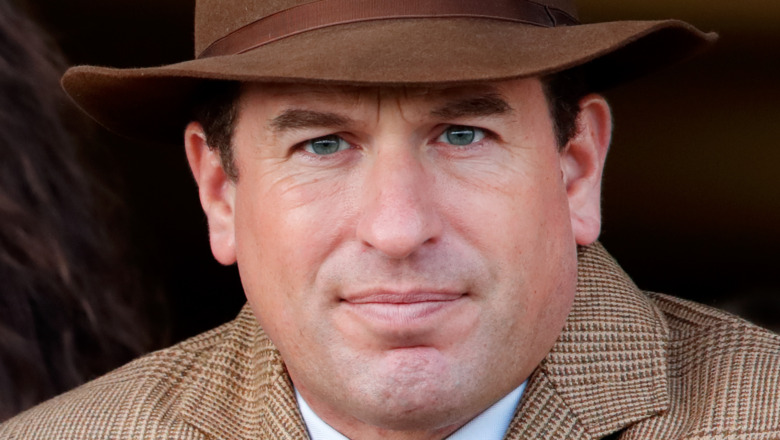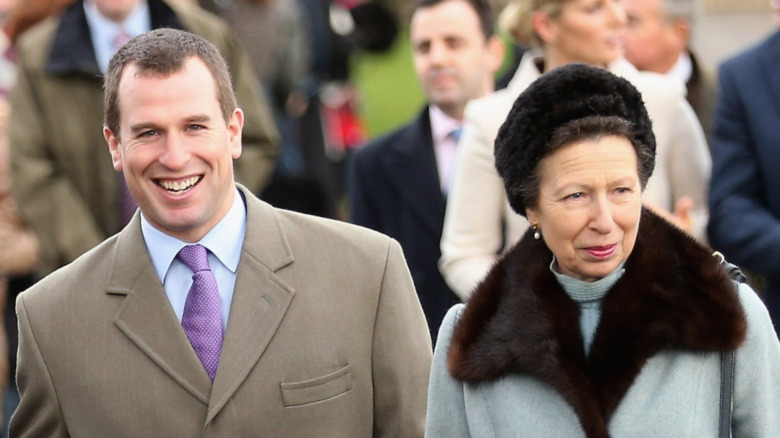Why Is Princess Anne's Son Peter Not A Prince?
Princess Anne is the only daughter of Queen Elizabeth II and Prince Philip. She's also been dubbed "the hardest working royal" several times, per Vogue, and is often found at engagements for the "over 300 charities, organizations and military regiments" she's a part of, per the royal family's official website. Born in 1950, Anne started her service at the age of 18, and has since been involved in a wide-variety of organizations, including Save the Children and the Carers Trust. She is also actively involved in equestrian organizations, having spent a great deal of her life riding horses. She was even part of the British Olympic Equestrian Team at the 1976 Montreal Olympics.
Anne married Captain Mark Phillips in 1973, though the two ended up divorcing in 1992. Before that, however, she and Mark had two children together, Peter Mark Phillips and Zara Tindall (née Phillips). Peter is the queen's oldest grandson, per Town and Country, and, allegedly, her favorite. Peter himself has spoken about his relationship with the queen, saying (via The Telegraph), "I've always been very close to my grandmother, and we speak often. She has been an inspirational person throughout my life." He is not a working royal and has held a variety of jobs, ranging from working on cars to working at a bank. As of this writing, he is reportedly running "his own sports management company."
And even though, at this point, Peter is 15th in line to the throne and was 5th in line when he was born, he didn't get a royal title like his cousins. But why?
Princess Anne didn't want Peter to have a title
The Letters Patent of 1917, issued by King George V, gave Princess Anne the choice about whether or not her children would receive an HRH (His/Her Royal Highness, the official designation of "prince" and "princess"), per BBC. This Letters Patent declared that all children of the monarch can be called prince or princess, but only the children of the monarch's male descendents would receive HRH titles and only "the eldest son of the eldest son of the Prince of Wales" should automatically receive a title (via U.K. Constitutional Law).
This means that while Anne, Princes Charles, Prince Andrew, and Prince Edward all received titles, only the children of the princes would be guaranteed HRH styling. While the Letters Patent didn't automatically bestow a title on Anne's children, Queen Elizabeth would have been able to write her own Letters Patent to grant one (like her father did for her own children when she was just a princess, per Reader's Digest).
It was reported, per Vogue, that upon his and Anne's wedding day, Captain Mark Phillips was offered a royal title, but declined it, preferring to keep his commoner title. This seems to be a pattern within the Phillips family, as they decided to withhold titles from their own children. BBC reported that the queen offered to give Peter Phillips a title, but Anne and Mark refused, a decision Anne told Vanity Fair "was probably the right thing to do," as Peter didn't have to live up to the expectations of his title.


